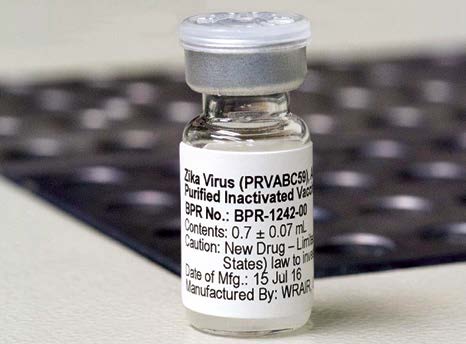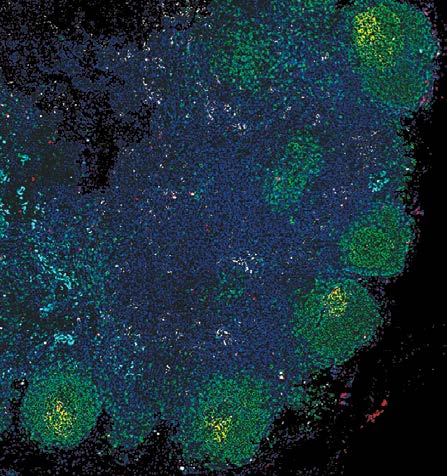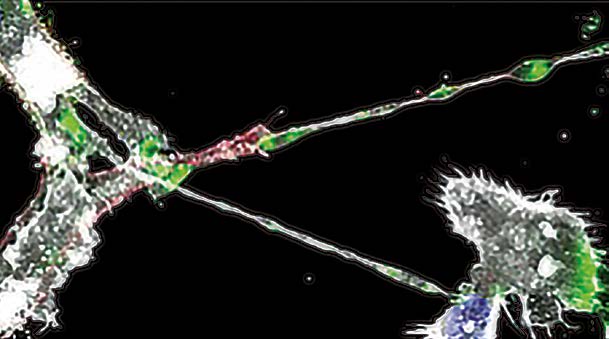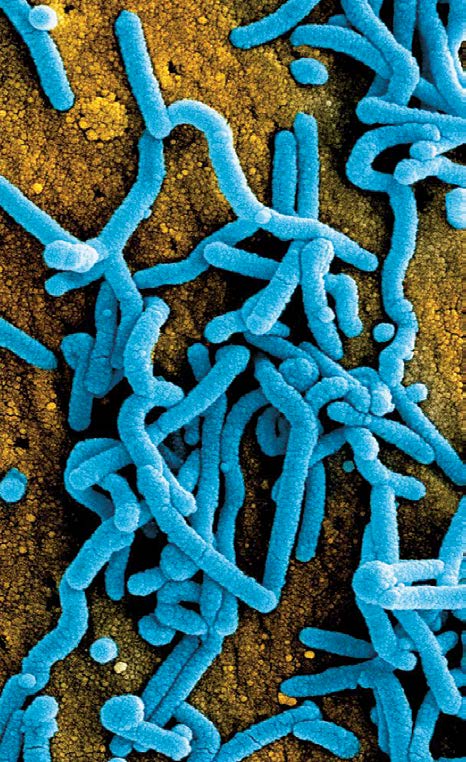Biomed Briefs
ZIKA VACCINE SAFE, EFFECTIVE WHEN ADMINISTERED DURING PREGNANCY

In a first-of-its-kind study, researchers at Texas Biomed, Trudeau Institute and Walter Reed Army Institute of Research (WRAIR) evaluated a Zika vaccine candidate during pregnancy in nonhuman primates. Zika virus, which is transmitted by mosquitoes, poses the greatest risk to pregnant women and developing fetuses by causing miscarriages and severe birth defects. The vaccine candidate, developed at WRAIR, has successfully completed Phase 1 clinical trials in humans. However, clinical trials usually exclude pregnant people, leaving key questions unanswered about vaccination during pregnancy. Previous studies at Texas Biomed showed the vaccine effectively blocks prenatal Zika transmission when given to marmosets prior to pregnancy.

The results of this latest study showed the vaccine was also effective when given during pregnancy with no adverse side effects. “This is a giant step forward,” says Texas Biomed Professor Emeritus Jean Patterson, Ph.D. “We have very strong evidence that this vaccine could protect fetal health during the next Zika outbreak.” The study was published in npj Vaccines.
RESEARCHERS PINPOINT MOST LIKELY SOURCE OF HIV REBOUND INFECTION


Antiretroviral therapy (ART) does an excellent job at suppressing HIV to undetectable levels in the blood. However, small amounts of latent virus hide throughout the body and when treatment is stopped, the virus can rebound. “If we can identify the starting point of the virus rebound, we can work on developing treatments that target those tissues and stop the virus from spreading in the first place,” says Texas Biomed Professor Binhua “Julie” Ling, M.D., Ph.D.
Working with the nonhuman primate version of HIV, which is called SIV, Dr. Ling and her collaborators used more than 9,000 individually barcoded viruses to track which rebounded first in nonhuman primates within days of stopping ART. They found lymph nodes in the abdomen and groin, as well as the spleen, are the leading sources of rebound infection. Lymph nodes are known reservoirs of HIV and SIV, but there are more than 800 lymph nodes throughout the body. This study, published in Science Translational Medicine, provides evidence for which ones would be best to target with new therapies.
SCIENTISTS DISCOVER METHOD EBOLA VIRUS USES TO INFECT CELLS


Ebola virus is sneaky. Texas Biomed Assistant Professor Olena Shtanko, Ph.D., and her colleagues found the deadly virus creates tunnels to move from cell to cell, evading detection by the body and existing treatments. “Our findings suggest that the virus can create its hiding place, hide and then move to new cells and replicate,” Dr. Shtanko says. Specifically, the virus is generating tunneling nanotubes – dynamic connections between cells that allow them to communicate by exchanging particles over relatively long distances. While these structures are known to help promote neurodegenerative diseases, cancer, HIV-1 and influenza, Dr. Shtanko and her team are the first to investigate their role in disseminating Ebola virus. The study, published in the Journal of Infectious Diseases, shows Ebola virus uses nanotubes to infect new cells even in the presence of treatments meant to stop it. The team is continuing to investigate this process in detail and if related viruses exploit the same mechanism to spread infection.
TEXAS BIOMED HELPING ADVANCE MARBURG VACCINE


Texas Biomed researchers are working with Sabin Vaccine Institute to test a vaccine against Marburg virus, which is part of the same filovirus family as Ebola virus and similarly causes hemorrhagic fever that kills up to 90% of those infected. The team ran preclinical tests demonstrating the vaccine’s efficacy, safety and optimal dosage, which are required before testing in humans. Phase 2 clinical trials in volunteers began in late 2023, following outbreaks in Equatorial Guinea and Tanzania that killed 18 out of 25 confirmed cases, with more probable cases. “We have been partnering with Sabin since 2019 and are very excited to see their Marburg vaccine candidate move into phase 2 clinical trials,” says Professor Ricardo Carrion, Jr., Ph.D., the Director of Maximum Containment Contract Research at Texas Biomed. “An effective vaccine is critical to protect people from this deadly virus, especially as we see the frequency of outbreaks increasing in more places.” Texas Biomed’s scientists had previously led the development of the nonhuman primate model for Marburg virus, conducting the foundational studies needed to accurately evaluate therapies and vaccines against the virus in macaques. The work was done in collaboration with the Biomedical Advanced Research and Development Authority (BARDA), the federal agency that oversees the development of medical countermeasures.